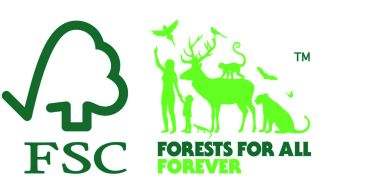When I helped set up the Forest Stewardship Council (FSC) in the early 1990s, the aim was to try and establish an ‘eco-labelling’ scheme that would allow consumers to distinguish wood and paper products derived from sustainable and ethically acceptable sources, from those where forests were being destroyed. The indications were that very few products would qualify for a label in the short to medium term, because truly sustainable management of forests for wood was very much the exception rather than the rule.
Now, 25 years later, there are tens of thousands of products carrying the FSC’s ‘Seal of Approval’. The ‘tree-tick’ logo has become one of the most ubiquitous of the eco-labels and can be seen everywhere from packets of toilet paper to magazines and IKEA furniture. Does this mean that there has been a miraculous improvement in how timber companies, and paper and furniture manufacturers, source their raw material? Are there really now hundreds of millions of acres of forests and woodlands worldwide under careful, sustainable, management?
Sadly, no. There is little hard evidence that forestry practices worldwide have significantly improved over the last two decades. The surprisingly few truly independent studies have shown that FSC-certified companies have marginally better standards for things such as working conditions for employees. Some FSC-certified companies in places such as Canada and Scandinavia (from where the UK obtains the vast majority of its imported wood) have made slight changes to their conservation practices. But the basic nature of the companies’ practices has remained the same.
Almost on a monthly basis for the last two decades, there have been exposés and scandals about FSC-certified wood being shown to come from illegal sources, or areas where forests are being destroyed or other severe environmental damage is occurring, or where companies are acting in blatant disregard for international agreements on, for example, the rights of indigenous peoples. A major documentary investigation for the German-French TV channel ARTE in 2018 revealed abuses of the FSC system from Brazil to Russia and the Congo to Cambodia.




